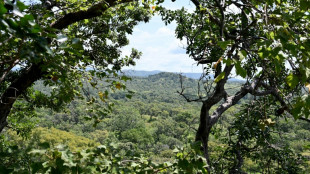
-
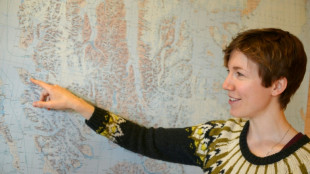 Explorers seek ancient Antarctica ice in climate change study
Explorers seek ancient Antarctica ice in climate change study
-
India's Iyer discharged from hospital after lacerated spleen

-
 Serbia marks first anniversary of deadly train station collapse
Serbia marks first anniversary of deadly train station collapse
-
Latin America weathered Trump tariffs better than feared: regional bank chief
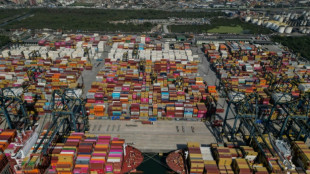
-
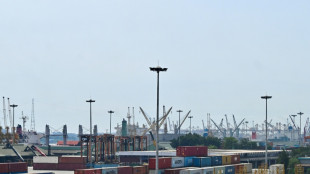 Bangladesh dockers strike over foreign takeover of key port
Bangladesh dockers strike over foreign takeover of key port
-
Tanzania president wins election landslide after deadly protests

-
 Sixers suffer first loss, Bulls stay perfect as NBA Cup opens
Sixers suffer first loss, Bulls stay perfect as NBA Cup opens
-
Dodgers, Blue Jays gear up for winner-take-all World Series game seven

-
 Taiwan's new opposition leader against defence spending hike
Taiwan's new opposition leader against defence spending hike
-
China to exempt some Nexperia chips from export ban

-
 Dodgers hold off Blue Jays 3-1 to force World Series game seven
Dodgers hold off Blue Jays 3-1 to force World Series game seven
-
Crowns, beauty, fried chicken: Korean culture meets diplomacy at APEC

-
 Panama wins canal expansion arbitration against Spanish company
Panama wins canal expansion arbitration against Spanish company
-
Myanmar fireworks festival goers shun politics for tradition
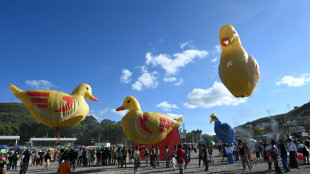
-
 China to exempt some Nexperia orders from export ban
China to exempt some Nexperia orders from export ban
-
Sixers suffer first loss as NBA Cup begins

-
 China's Xi to meet South Korean leader, capping APEC summit
China's Xi to meet South Korean leader, capping APEC summit
-
Japan's Chiba leads after Skate Canada short program

-
 Finland's crackdown on undocumented migrants sparks fear
Finland's crackdown on undocumented migrants sparks fear
-
Climbers test limits at Yosemite, short-staffed by US shutdown
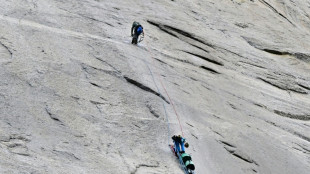
-
 Gstaad gives O'Brien record 21st Breeders' Cup win
Gstaad gives O'Brien record 21st Breeders' Cup win
-
After the tears, anger on Rio's blood-stained streets

-
 Sinner boosts number one bid in Paris, to face Zverev in semis
Sinner boosts number one bid in Paris, to face Zverev in semis
-
Springer back in Toronto lineup as Blue Jays try to close out Dodgers

-
 Nationals make Butera MLB's youngest manager since 1972
Nationals make Butera MLB's youngest manager since 1972
-
Guirassy lifts Dortmund past Augsburg ahead of Man City clash

-
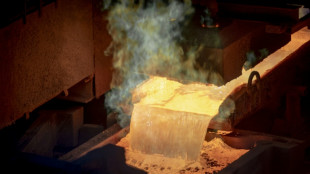 G7 says it's 'serious' about confronting China's critical mineral dominance
G7 says it's 'serious' about confronting China's critical mineral dominance
-
NFL fines Ravens $100,000 over Jackson injury status report

-
 NBA refs to start using headsets on Saturday
NBA refs to start using headsets on Saturday
-
Trump says Christians in Nigeria face 'existential threat'

-
 French-Turkish actor Tcheky Karyo dies at 72
French-Turkish actor Tcheky Karyo dies at 72
-
Food stamps, the bulwark against hunger for over 40 mn Americans

-
 Trump keeps world guessing with shock nuclear test order
Trump keeps world guessing with shock nuclear test order
-
Wall Street stocks rebound on Amazon, Apple earnings

-
 US Fed official backed rate pause because inflation 'too high'
US Fed official backed rate pause because inflation 'too high'
-
Prayers and anthems: welcome to the Trump-era Kennedy Center

-
 Swiss central bank profits boosted by gold price surge
Swiss central bank profits boosted by gold price surge
-
Sinner beats Shelton to boost number one bid in Paris

-
 French court jails Bulgarians for up to four years for Holocaust memorial defacement
French court jails Bulgarians for up to four years for Holocaust memorial defacement
-
Profits dip at ExxonMobil, Chevron on lower crude prices

-
 Ashraf and Mirza skittle South Africa as Pakistan win 2nd T20
Ashraf and Mirza skittle South Africa as Pakistan win 2nd T20
-
2,000 trucks stuck in Belarus after Lithuania closes border: association

-
 French lawmakers reject wealth tax proposal in budget debate
French lawmakers reject wealth tax proposal in budget debate
-
Premier League blames European expansion for lack of Boxing Day games

-
 Bublik sets up Auger-Aliassime semi-final at Paris Masters
Bublik sets up Auger-Aliassime semi-final at Paris Masters
-
World's most expensive coffee goes on sale in Dubai at $1,000 a cup

-
 Trump stirs global tensions, confusion with nuclear test order
Trump stirs global tensions, confusion with nuclear test order
-
Panic across US as health insurance costs set to surge

-
 Court eases ban on Russian lugers but Olympic hopes on thin ice
Court eases ban on Russian lugers but Olympic hopes on thin ice
-
England captain Itoje targets Autumn Nations clean sweep


Chinese sub discovers deepest-ever creatures 10 km undersea
A Chinese submersible has discovered thousands of worms and molluscs nearly 10 kilometres (six miles) below sea level in the Mariana Trench, the deepest colony of creatures ever observed, a study revealed on Wednesday.
The discovery in Earth's deepest underwater valley suggests that there could be much more life thriving in the hostile conditions at the bottom of our planet's largely unexplored oceans than previously thought, the China-led team of scientists said.
Almost all life on Earth is supported by light from the Sun. However in the total darkness at the bottom of the world, these creatures live off of chemicals such as methane seeping through cracks in the seafloor, a process called chemosynthesis.
Last year, the Chinese submersible "Fendouzhe" -- or "Striver" -- dove 23 times into the depths of the Mariana Trench in the western Pacific Ocean with researchers on board, according to the study in the journal Nature.
They found colonies of thousands of marine tubeworms and molluscs called bivalves at depths ranging from 2,500 to 9,533 metres (8,200 to 31,000 feet) deep.
Video released alongside the study showed fields of tubeworms, which grew up to 30 centimetres (12 inches) long, as well as piles of molluscs and clams.
Spiky crustaceans, free-floating marine worms, sea cucumbers, feathery-armed sea lilies and other invertebrates were also recorded in the depths.
The study marked "the discovery of the deepest and the most extensive chemosynthesis-based communities known to exist on Earth," its authors said.
Given that other ocean trenches are similar, "such chemosynthesis-based communities might be more widespread than previously anticipated," they added.
The researchers said they also found "compelling evidence" that methane was being produced by microbes, with the tubeworms tending to cluster around microbial mats that resemble snow.
Previous studies have found thriving communities of single-cell organisms on the ocean floor, but few large animals.
But a remotely operated vehicle discovered tubeworms and other marine invertebrates living in hydrothermal vents in the crust below the seafloor two kilometres deep in the Pacific, research said last year.
- Pressure rising -
The new study was published as nations wrangle over the contentious issue of deep-sea mining. China, the United States and others have expressed interest in mining the depths for valuable minerals.
Ocean scientists warn that mining the little-explored seafloor, one of the last wild zones on the planet, could decimate fragile ecosystems that are not yet well understood.
Despite recent talks, the International Seabed Authority -- which oversees deep-sea mining in international waters -- has yet to adopt long-awaited rules governing the industry.
Chinese media has previously reported that the Fendouzhe submersible mission will conduct research on "deep-sea materials".
Only a handful of people have ever visited the bottom of the Mariana Trench, which is a crescent-shaped depression in the Earth's crust that is deeper than Mount Everest is high.
The first explorers visited the trench in 1960 on a brief expedition.
But after that, there were no missions until Hollywood director James Cameron made the first solo trip to the bottom in 2012, describing a "desolate" and "alien" environment.
The water pressure at the bottom of the trench is a crushing eight tons per square inch, more than a thousand times the atmospheric pressure at sea level.
M.AbuKhalil--SF-PST


